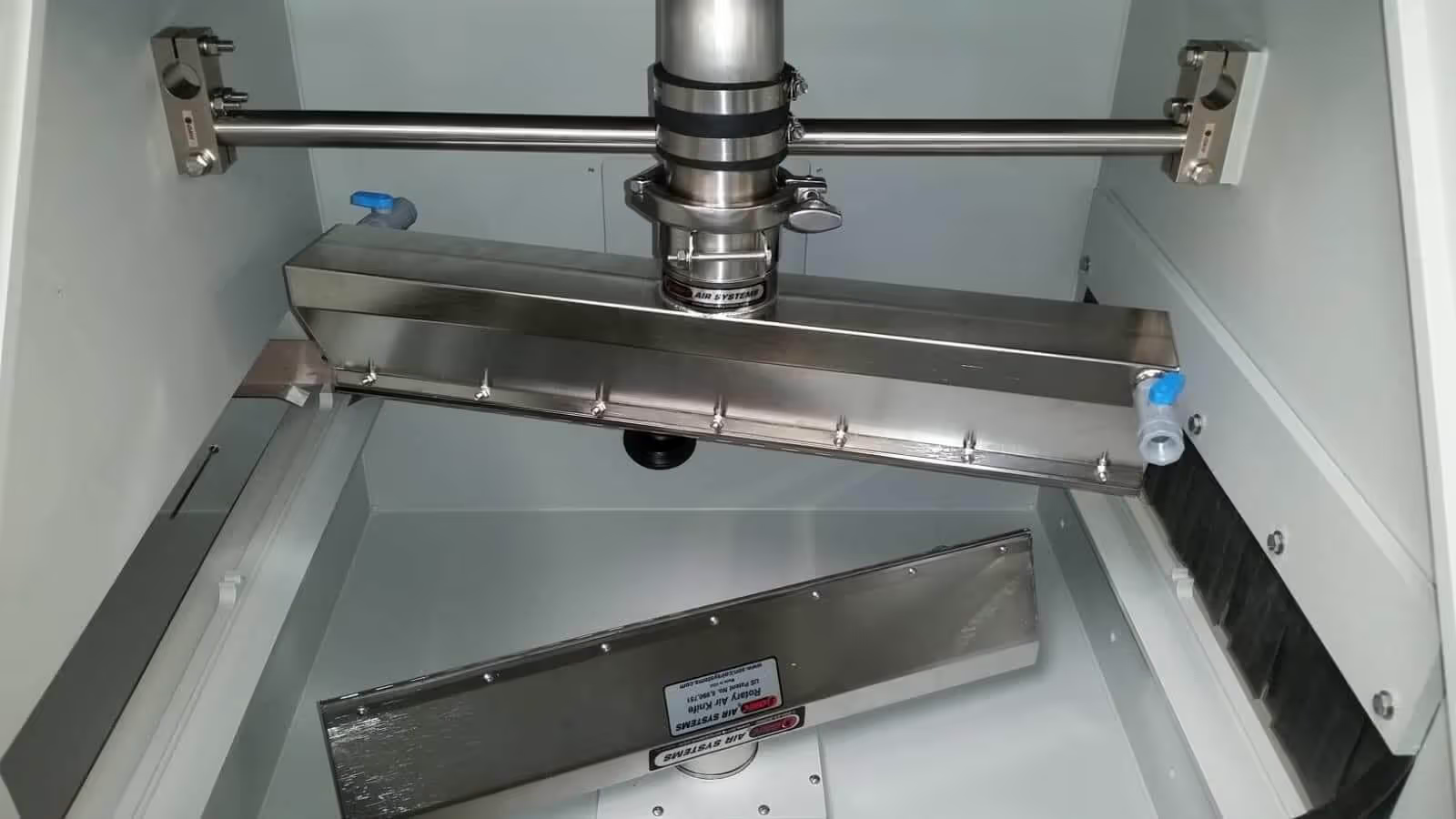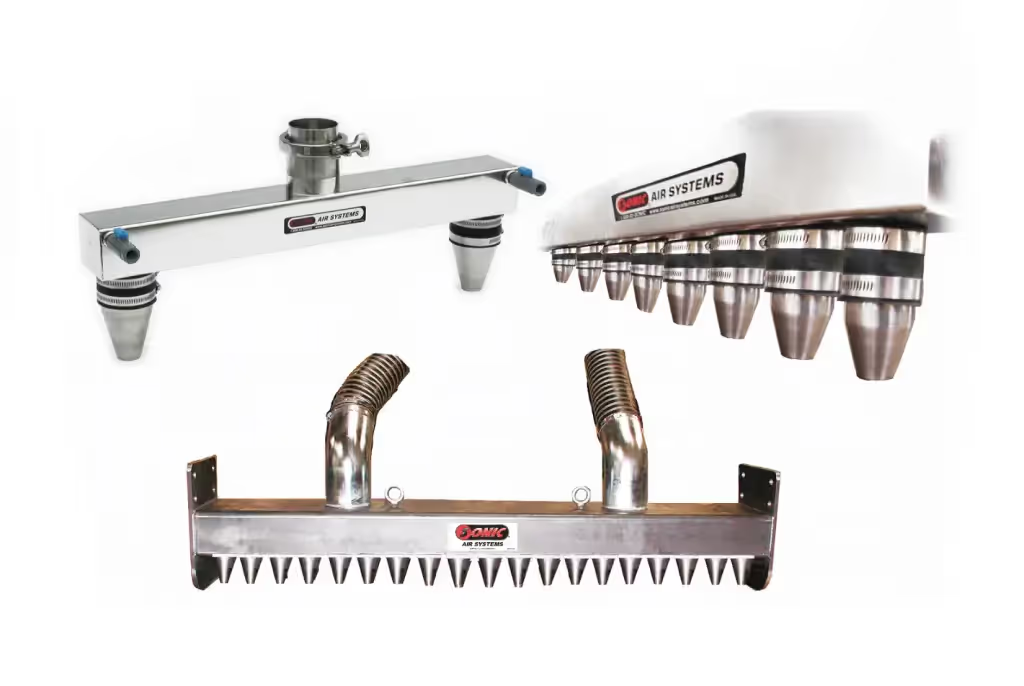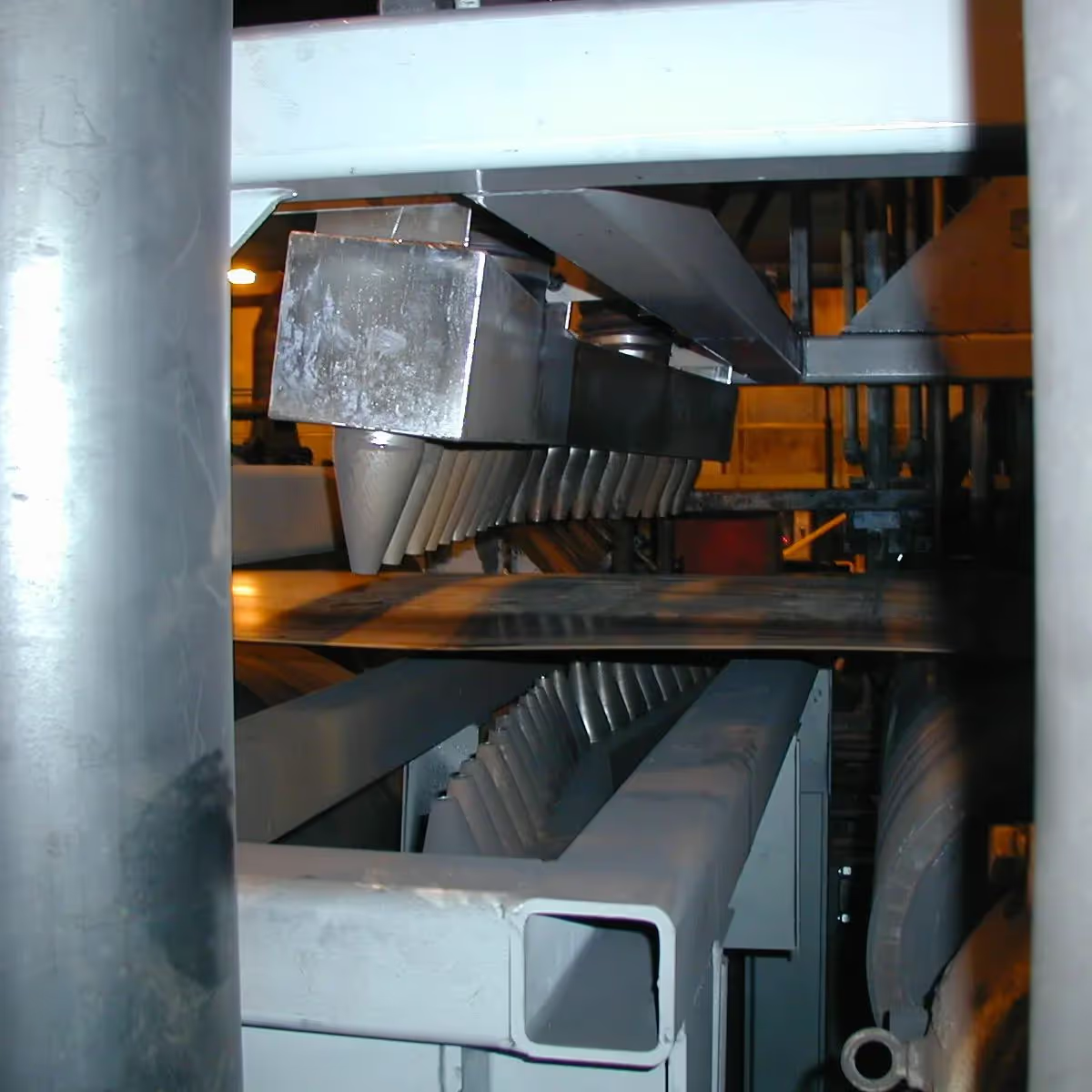air knife
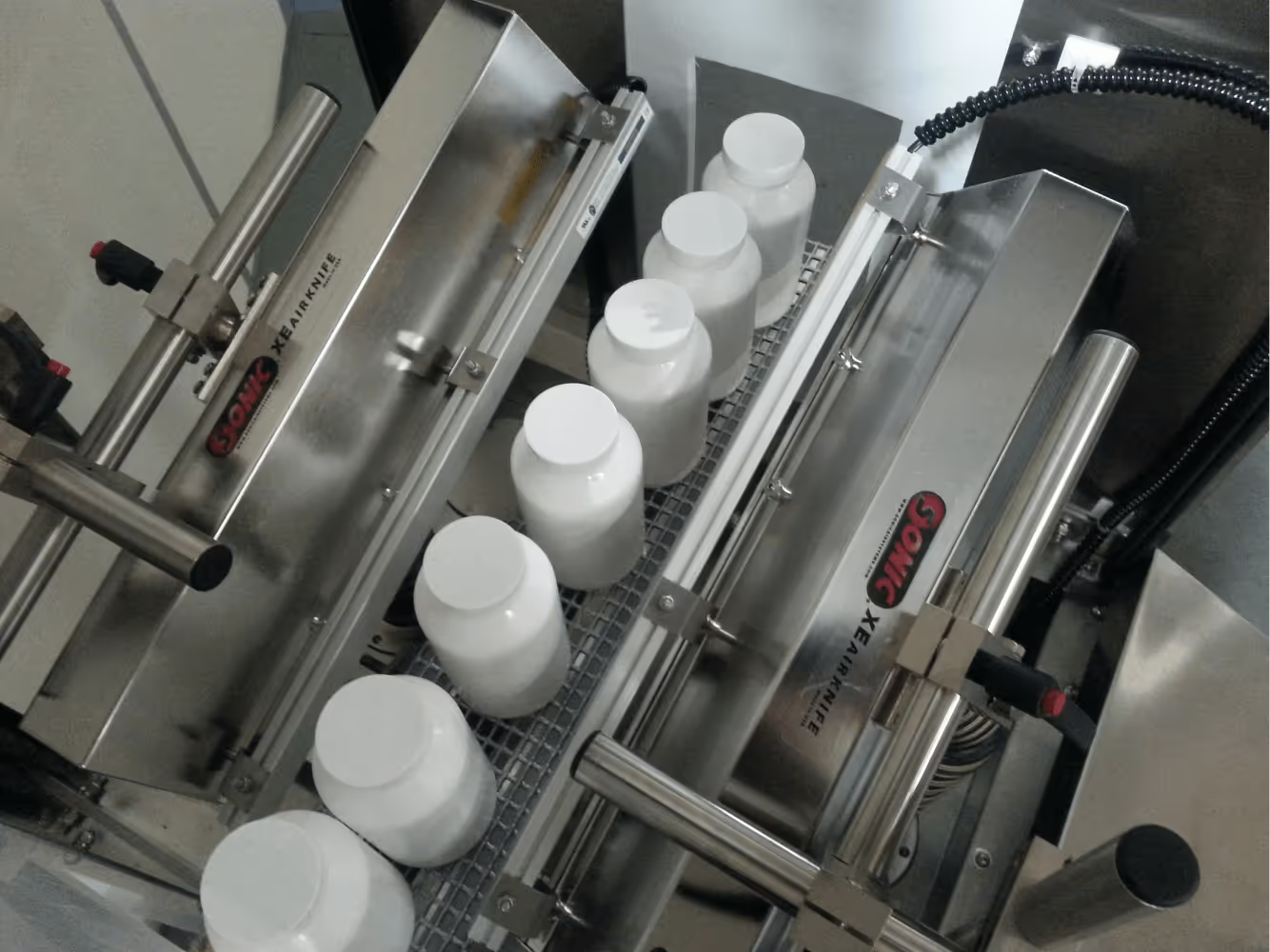
.JPG)
Industrial Air Knife Solutions for Precision Drying and Surface Cleaning
Manufacturers across industries face pressure to increase production efficiency while reducing energy costs and maintaining high product quality. Traditional solutions such as compressed air or manual drying often waste energy and labor while delivering inconsistent results.
An air knife creates a high-velocity, laminar curtain of air generated through precision slot design, which amplifies surrounding air for greater efficiency. This uniform airflow removes moisture, dust, and debris from product surfaces, preparing them for labeling, coating, or packaging. The result is faster line speeds, higher throughput, and lower operating costs with consistent, repeatable quality.
How Sonic Air Knives Work
An industrial air knife uses a precision slot design to create a controlled, sheet-like flow of air. Inside the teardrop-shaped plenum chamber, air is evenly distributed before it exits in a smooth, laminar curtain that delivers consistent, high-impact airflow across the full length of the knife. With a 0.95 coefficient of discharge, a Sonic XE (Extra Efficient) Air Knife is enhanced by the Coandă Effect, which entrains surrounding air to increase the total volume of airflow. This amplification ratio allows Sonic air knives to provide greater surface coverage while consuming significantly less energy than compressed air.
This leads to a streamlined, high-velocity curtain of air that removes moisture, dust, and debris from product surfaces without turbulence. With widths ranging from 2 inches (5 cm) to 200 inches (508 cm), our products are ideal for applications such as surface drying, blow-off, heating, cooling, coating control, and debris removal. Unlike compressed air systems, which produce uneven and costly bursts, Sonic’s air knife design ensures uniform coverage for processes like drying bottles before labeling, removing dust from statically charged surfaces or clearing liquids from automotive parts.
-p-2000.avif)
Our Air Knife Products
Sonic Air Systems offers a comprehensive range of advanced air knife solutions designed to meet the diverse needs of industrial applications.
Why Choose Our Industrial Air Knife Products?
Energy Efficiency and Cost Savings
Air knives are powered by centrifugal blowers that consume only a fraction of the energy required by compressed air systems. This technology can reduce energy use by up to 75%, which translates into significant reductions in operating cost over time. By lowering air consumption and eliminating the inefficiencies of compressed air, customers achieve power cost savings while maintaining high performance.
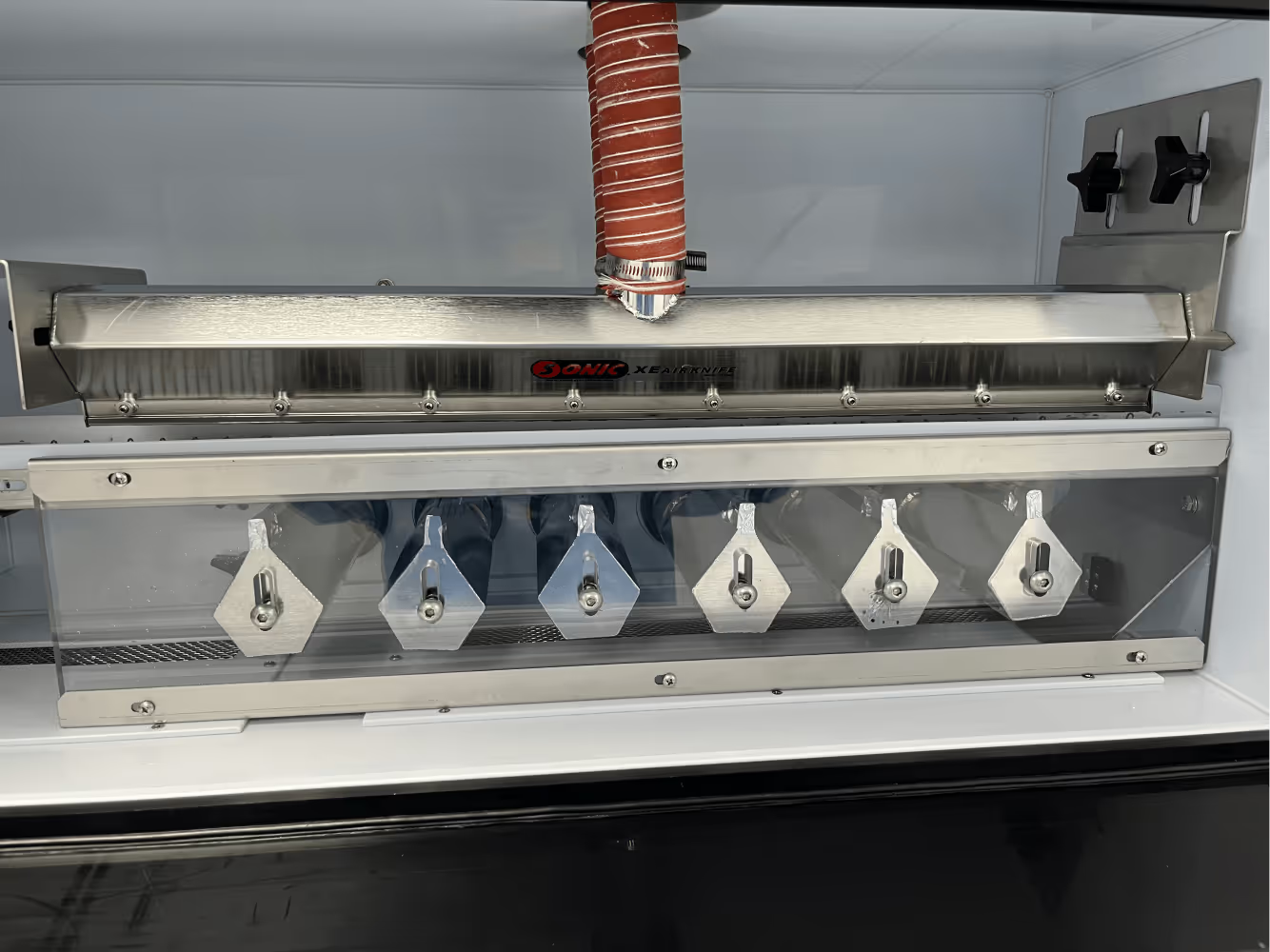

Advanced Teardrop Profile Design
Every air knife is engineered with a teardrop profile that produces a consistent, hard-hitting sheet of laminar airflow across the entire length of the knife. This streamlined flow maintains high exit air velocity and uniform performance, preventing spotting and guaranteeing complete drying or blow-off. The result is greater process reliability and improved product quality at faster line speeds.
Durable Materials for Every Application
Sonic air knives are available in multiple material grades engineered to match your operating environment and duty requirements. Lightweight aluminum delivers strength and cost-effectiveness for general manufacturing applications. Stainless steel 300 series provides enhanced durability for critical cleanliness environments, while heavy gage carbon steel offers durability in high speed rolling mills.
With proper material selection, Sonic air knives deliver years of continuous operation with minimal maintenance. Should your operating conditions change or intensify over time, we can upgrade your system with more durable materials engineered for the new requirements.
.avif)
Frequently Asked Questions
The majority of Sonic air knives have no moving parts and therefore require little or no regular maintenance. For those industries that specify Sonic Sanitary or E-Z Clean Air Knives for food, pharma, medical devices, and other critical cleanliness blow-off air, these Sonic designs facilitate industry compliance. There are also air knives with static ionizing bars, self-propelled rotary air knives, and other specialty designs that require some annual or bi-annual maintenance.
Product surface processes in the past, such as drying, coating control, heating, cooling, and debris removal, were all performed using either mechanical contact methods (scrapers, rollers, or towels) and other types of non-contact options (high pressure compressed air, radiant heaters or just very long conveyor runs), which require high energy, higher acquisition costs, additional factory floor space, and more costly recurring maintenance. Not only do Sonic air knives operate at 95% exit air efficiency, but our wide range of non-contact air knife and air nozzle technology is second to none for the fastest drying times, highest energy efficiency, smallest production line space allocation, and the most uniform coverage. Sonic also provides a written performance guarantee for every system that we quote.
A general rule is that most air knives should be set with an angle of impingement at 10° to 15° from perpendicular and against (counter-current) to the product flow. The distance from the industrial air knife outlets to the product is a key factor in determining the system’s total blower horsepower. Although closer is better, which keeps the blower horsepower as low as possible, there are many successful systems designed for maximum impact air velocity up to several feet from the knives or nozzles.
There is an increasing number of air knife applications across many industries where cold air from air knives at 10°F to 50°F is being used to cool products. Many city water systems are incentivizing their industrial users to reduce consumption and grey water discharge, so replacing water quench cooling of conveyed products with cold air offers many benefits. Sonic’s COOL-AIR in-line after-cooler system uses closed circuit cooling water (water tower of water/glycol) to reduce air knife air temperatures to approximately 10°F above the temperature of the closed circuit cooling water supply in order to maintain constant air knife temperatures with maximum air cooling efficiency. Cold air quenching prevents thermal stress on parts, uses less power than water blow-off air knife systems after water quench, and doesn’t require all of the support equipment for spraying water, containing water, or the filtration systems required before discharging the grey water to municipal systems.
It must first be noted that high-velocity air knives do not produce a static charge in parts onto which air is blowing. It is also true that wet surfaces of parts, after washing or spraying, do not hold a static charge and that water blow-off with air knives does not generate one.
Releasing static electricity from most clean surfaces or parts travelling on a conveyor requires only ionizing/static neutralizing bars without air knives. Whenever there are any statically charged surface particles or larger debris on webs or parts, a high-velocity air knife, together with an electrically powered ionizing bar, provides both effective blow-off and static neutralization of the particles and the surface/parts themselves.
Every blower-powered air knife receives its air from a rotating machine using standard air filters rated for 2-10 microns. Even if a HEPA air filter rated for 0.3 microns (a.k.a. MERV 17) is connected to the blower inlet, it is impossible to guarantee that the air from the blower will always meet critical cleanliness standards. The only way to guarantee intrinsically clean air, 0.3-micron air blowing onto critical products at all times, is by using a HEPA filter installed in-line after the blower.
When choosing an in-line HEPA filter, confirm the mounting arrangement, inlet & outlet connections, and flow rating are sized to match the blower it is to be used with.


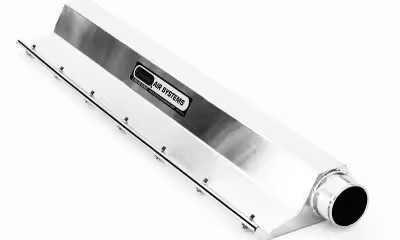
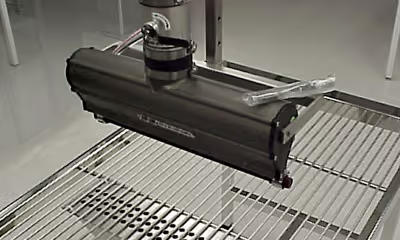
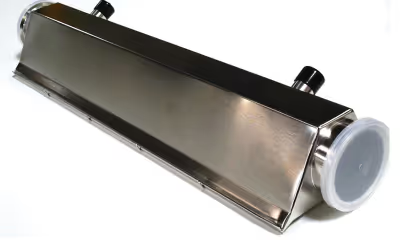
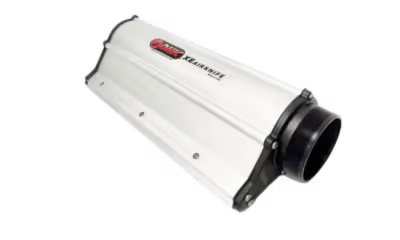
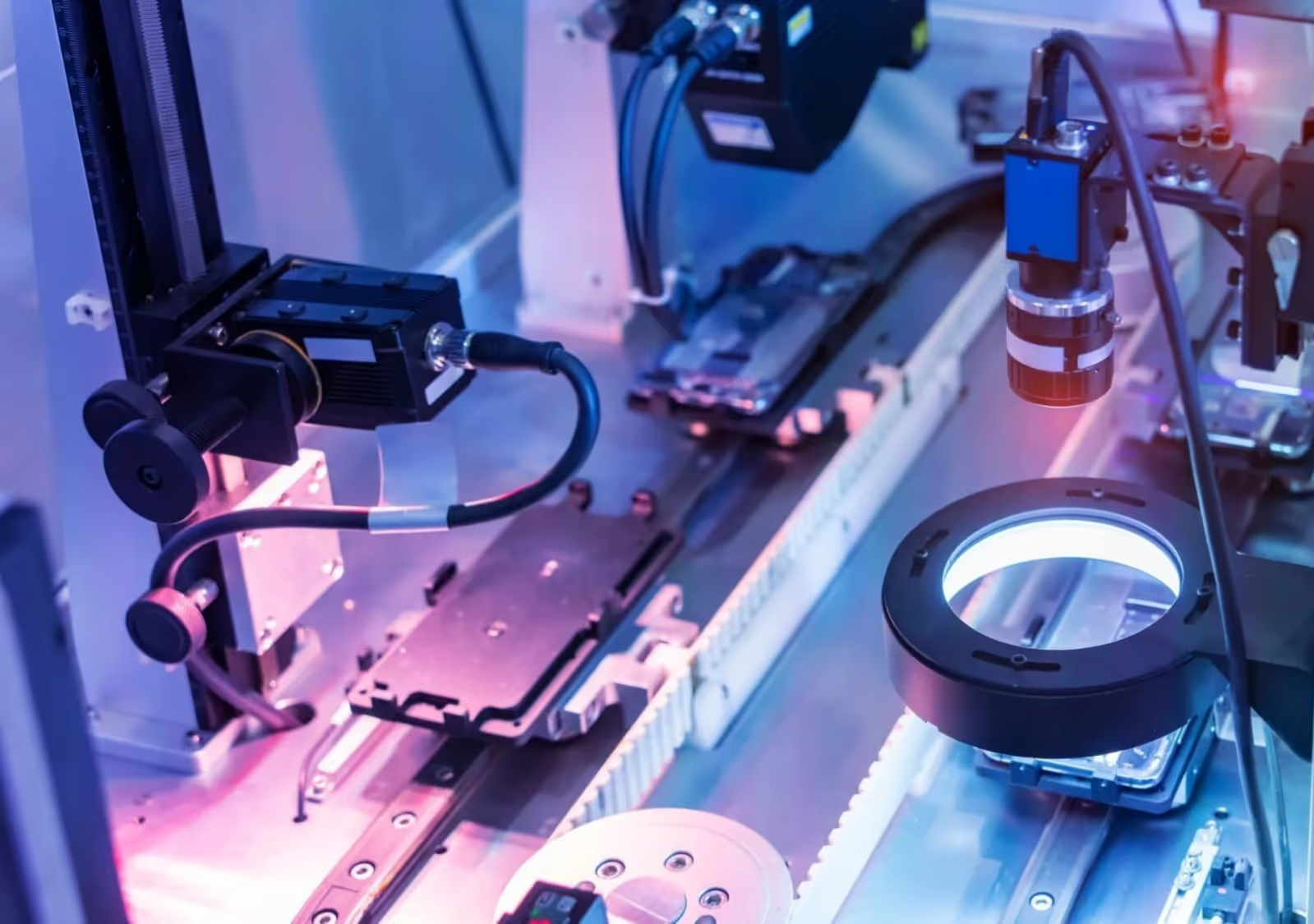

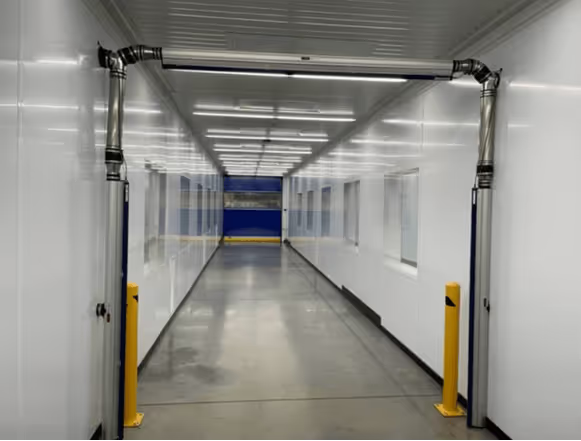
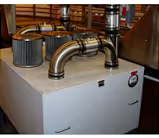

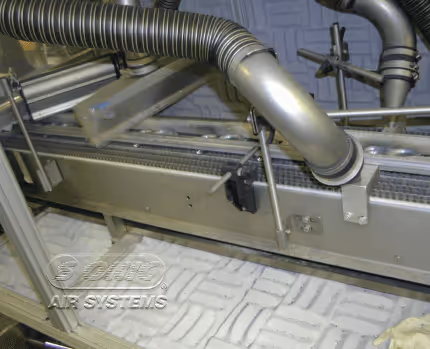
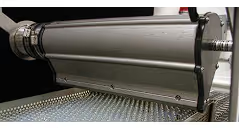

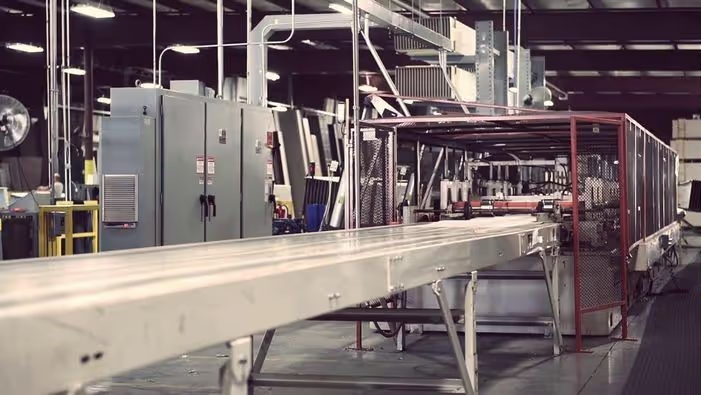
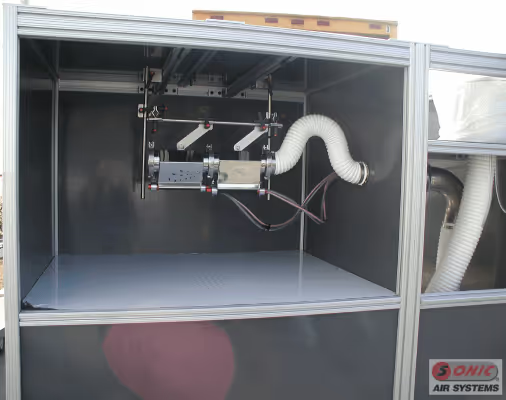
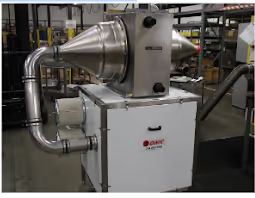
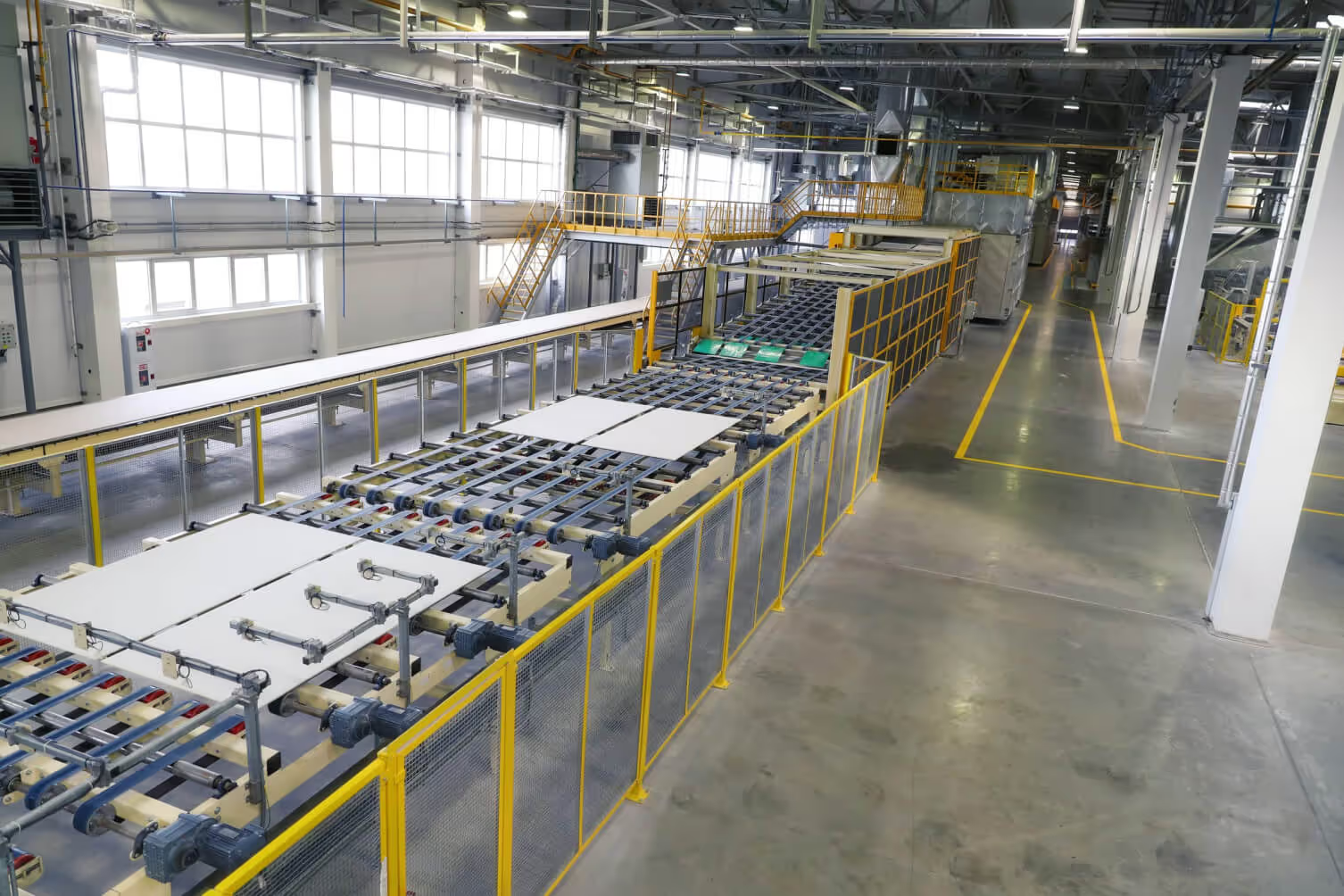
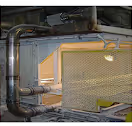
.avif)
